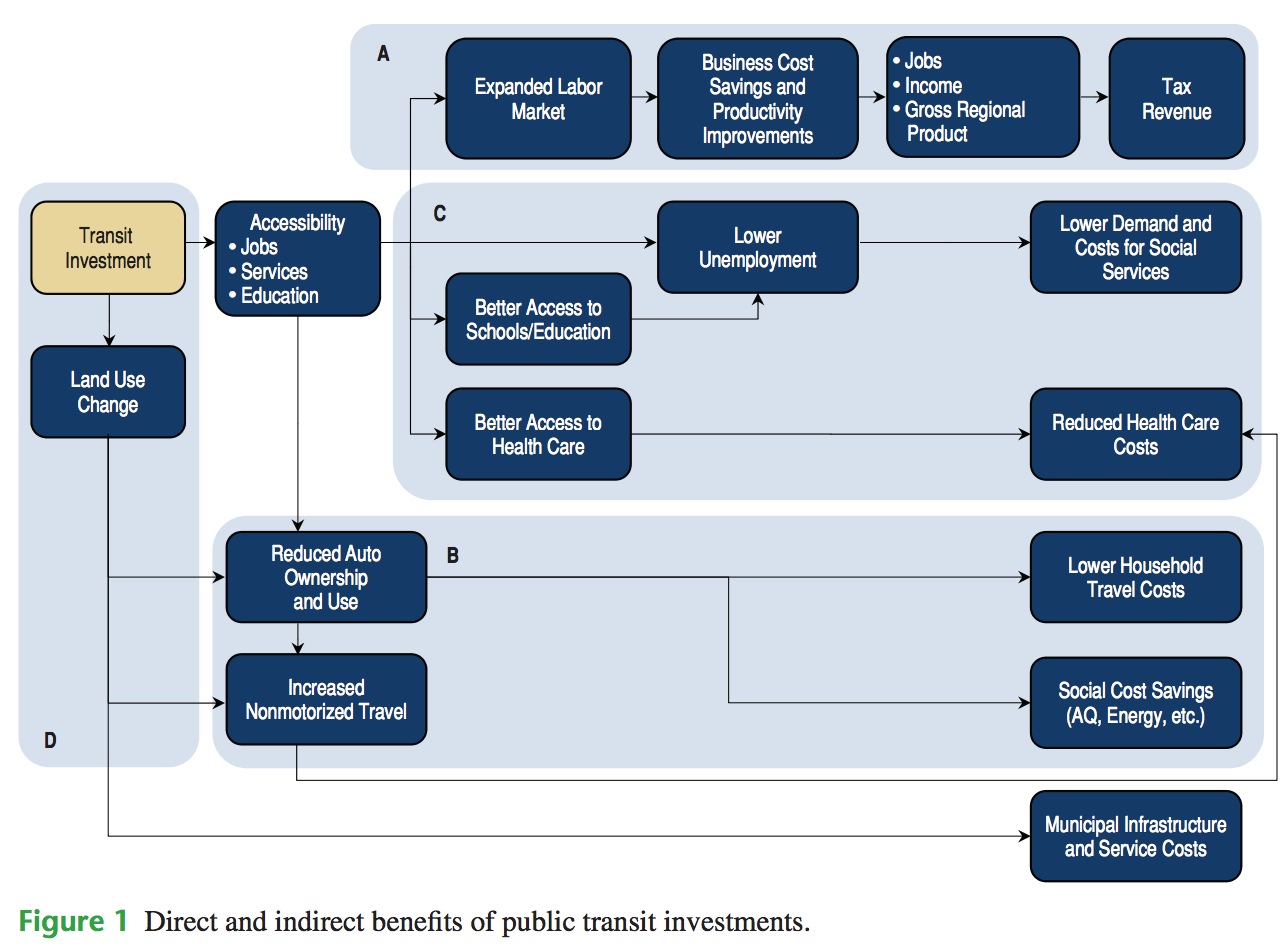NATIONAL COOPERATIVE HIGHWAY RESEARCH PROGRAM
Summary
The economic impact of transportation investments, including transit projects and services, has been of great interest in recent years. Studies have typically focused on three aspects of economic impacts: job creation through capital and operating spending; effects on local development patterns; and direct benefits to riders (e.g., time and cost savings) and resulting impacts on business costs and productivity. An additional, indirect impact that has seen less consideration in transit program and project planning is the potential cost savings to other government programs that result from the benefits provided by transit. These indirect benefits can result from improved access to jobs, health care, and education, which can reduce the demand for government services.
This research broadens the range of transit-related economic benefits that may be considered by providing information on the state of knowledge regarding these indirect benefits as well as tools available to estimate these benefits. The research also proposes a framework for how they might be incorporated into program and project evaluation. The research began with a literature review. The review determined that the relationships between transit access and indirect cost savings have been quantified to varying degrees, with some documented more reliably than others. Findings include:
- Transportation is a critical factor for employment. The literature found a connection between transit and job access, where job participation increased for low-wage workers following the start of new transit services.
- Transit can improve access to educational opportunities, indirectly supporting increased employment. Literature has found that more and better education leads to lower unemployment, better chances of reemployment, and higher wages.
- Increased employment reduces demand for other government services such as unemployment transitional assistance. Limited available research found that individuals’ lifetime earnings and wage growth trajectories were potentially affected by transit and other job access transportation programs.
- Improved access to preventive health care can provide cost savings in health care services by avoiding the need for costlier emergency care visits as well as costs associated with home health care visits.
For example, a study in Michigan found social benefits of $1.24 per public transit trip, for all trips. Public transit in Wisconsin is estimated to provide a benefit of about $1.55 per work-related trip, $4.03 per educational trip, and $5.66 per health care-related trip. Studies of transit services specifically designed to provide job access have consistently found benefit/cost ratios greater than 1.0. The benefits of a particular transit service, however, can vary widely depending on the type of service, geographic context, and populations served. Benefits expressed in terms of cost per trip may be more generalizable than studies reporting an overall benefit/cost ratio or cost savings, which may vary greatly depending upon service utilization and rider characteristics.
Download full version (PDF): Indirect Benefits of State Investment in Public Transportation
About the National Cooperative Highway Research Program
www.trb.org/NCHRP
The NCHRP is administered by the Transportation Research Board (TRB) and sponsored by the member departments (i.e., individual state departments of transportation) of the American Association of State Highway and Transportation Officials (AASHTO), in cooperation with the Federal Highway Administration (FHWA). Individual projects are conducted by contractors with oversight provided by volunteer panels of expert stakeholders.
Tags: National Academies, NATIONAL COOPERATIVE HIGHWAY RESEARCH PROGRAM, NCHRP, Transportation Research Board, TRB, TRB of NA







 RSS Feed
RSS Feed